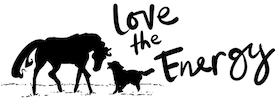Distinctive coat colors that make horses appear bluish are how we identify blue roan horses. It’s a genetic trait. The body is a black base coat interspersed with 50% white hairs. Meanwhile, the head, lower legs, mane, and tail remain a solid color, giving a distinct look. Many different breeds have blue roan horses, and they always stand out from the herd.
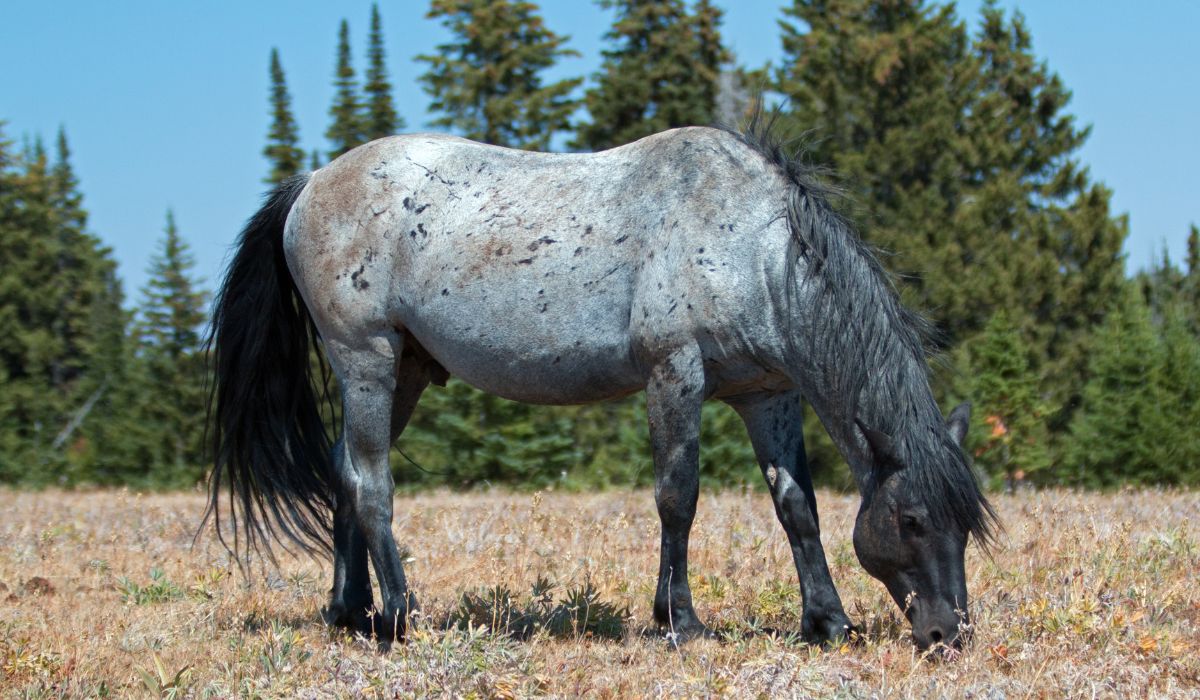
The blue roan coat color is a dominant genetic trait than occurs in many horse breeds, including Quarter Horses, Aztecas, Percherons, Belgian Draft Horses, the Welsh Pony, the American Paint Horse, and Paso Fino horses.
We’ll take a deeper dive into what the blue roan horse color looks like, coat changes and fun facts, and the breeds that have this color pattern. While blue roan, and red and bay roan colors, are popular, it’s important to also judge a horse on its conformation and temperament.
What Does the Blue Roan Color Look Like?
The blue roan color occurs when a horse with a black base coat has white hair interspersed. Since roan is a dominant trait, at least one of the horse’s parents must be roan for the foal to have the roan color characteristic.
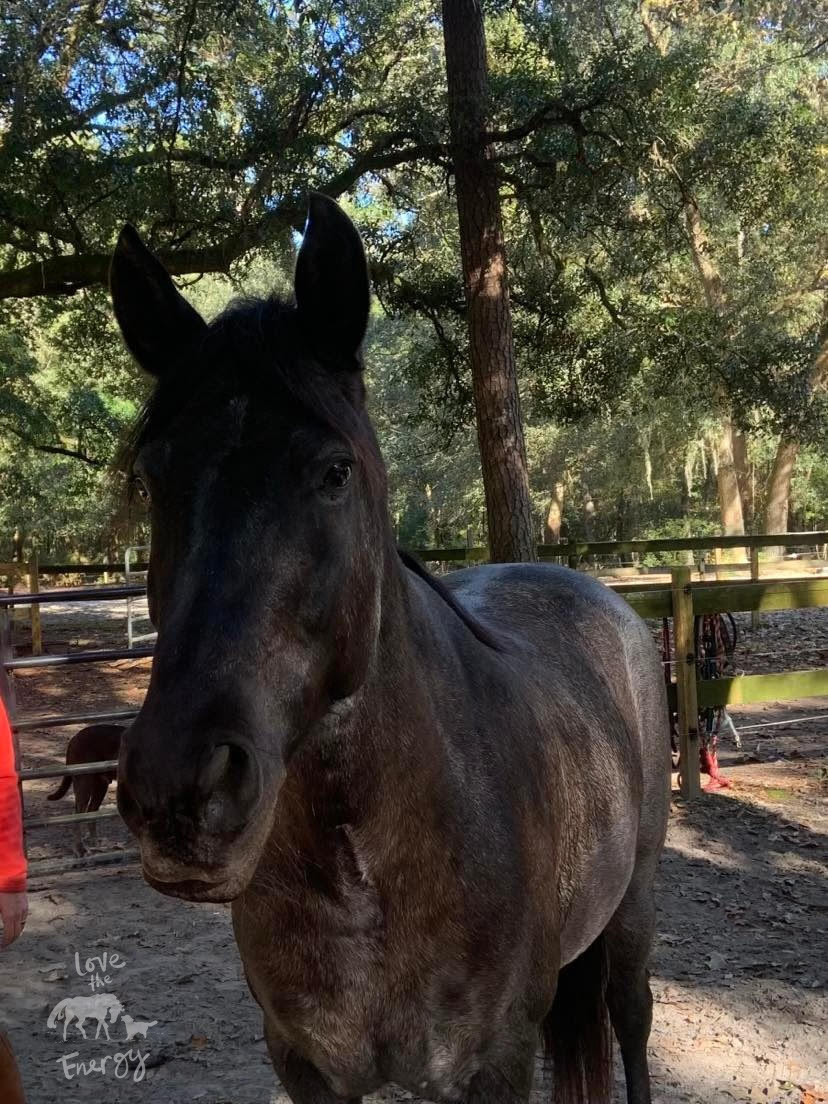
Foal coats can make it difficult to determine if a horse will be roan or not. However, the true coat color can be seen at three to four months old when the foal coat starts shedding out. Foals are typically born a lighter color, it’s camouflage from predators in the wild.
The blue roan color is on the body and sometimes the upper legs of the horse. The bluish look is created when the black base coat is equally interspersed with white hairs. The head, lower legs, mane, and tail remain the solid black color, giving the horse an even more stunning appearance.
One fun fact about the blue roan (or any roan) color is what happens when a horse injures itself. With other coat colors, if the horse is injured, the hair in that spot grows back white. In a roan horse, the hair grows back its solid base color, so in this case, it would return as black hair.
Does the Color Change with the Seasons?
There are a lot of fun facts about blue roan horses, and one of these is that the horse will change color in the different seasons.
Horses darken in the winter and lighten in the summer. This is because the black hairs, the base coat, become longer and thicker in the winter, making it harder to see the white hairs. In the first photo of my Azteca gelding, you can see his coloring in the winter, when he was still down South.
In the summer, blue roan’s lighten. The 50-50 mix appears again, making the horse appear lighter. You can see an example of this with my horse in the photo below.
The rabicano or sabino coat patterns or a varnish Appaloosa are not roans, they are distinct colors. Blue roan horses don’t have a coat pattern, instead, it’s that equal mixing of the black and white hairs. Gray horses and roans are also distinct from each other.
Unlike gray horses, the roan color doesn’t change as the horse ages. A gray horse often gets lighter with age. The roan, in this case, blue roan, will change color with the seasons but not as the horse ages. To make things just a little confusing, a gray horse can still carry the roan gene, and produce foals that are true roans.
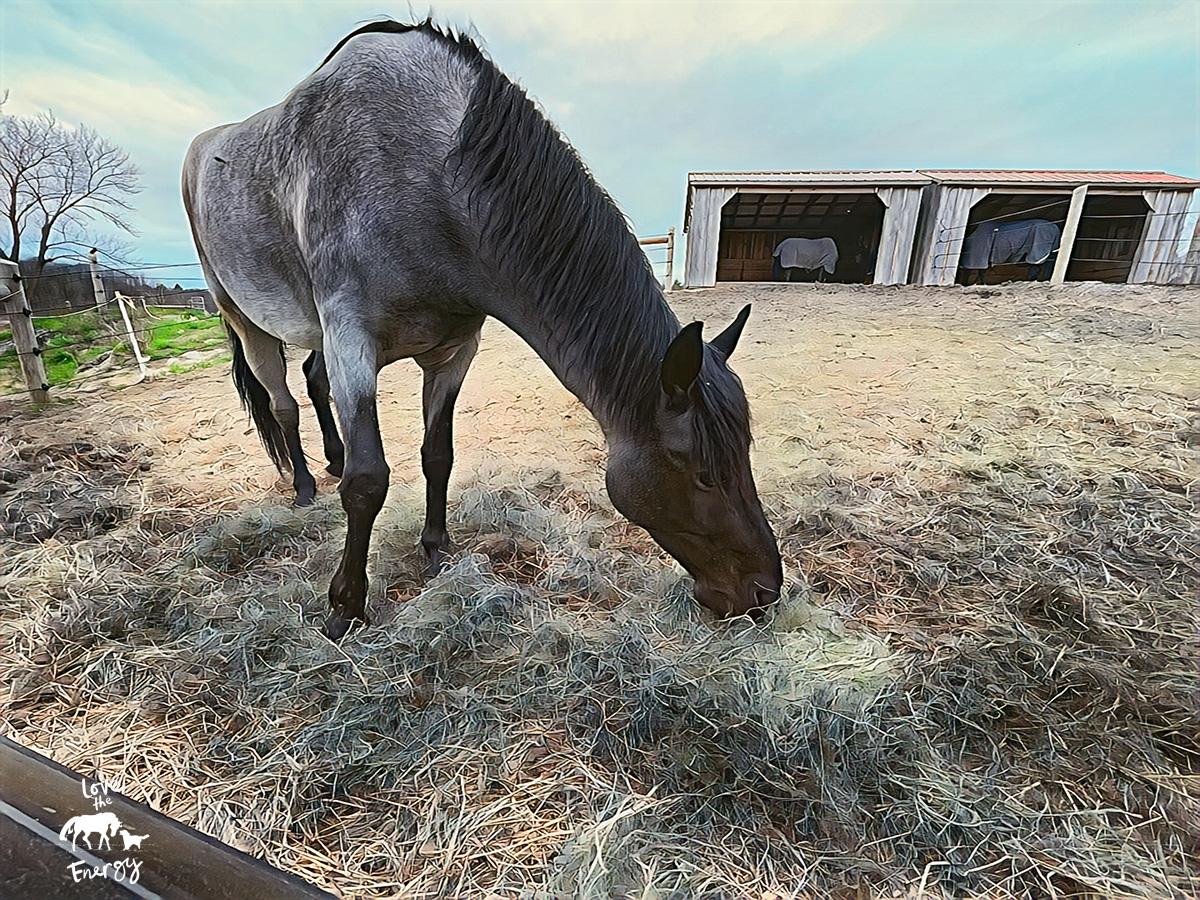
Are Blue Roan Horses Rare?
Yes and no. Read on if that confuses you. There are three types of roan horses – red, bay, and blue. Of those, the blue roan color represents the smallest number of horses, so in a sense, that makes blue roan horses rare. But there are a lot of breeds with blue roan horses, so overall, blue roan horses aren’t rare. Although it may take a little longer to find one if you’re looking to purchase a blue roan horse.
What Horse Breeds Have Blue Roans?
There are seven breeds with blue roan horses, and we’ll share a little more information about each. The breeds are Quarter Horses, Aztecas, Percherons, Belgian Draft Horses, the Welsh Pony, the American Paint Horse, and Paso Fino horses.
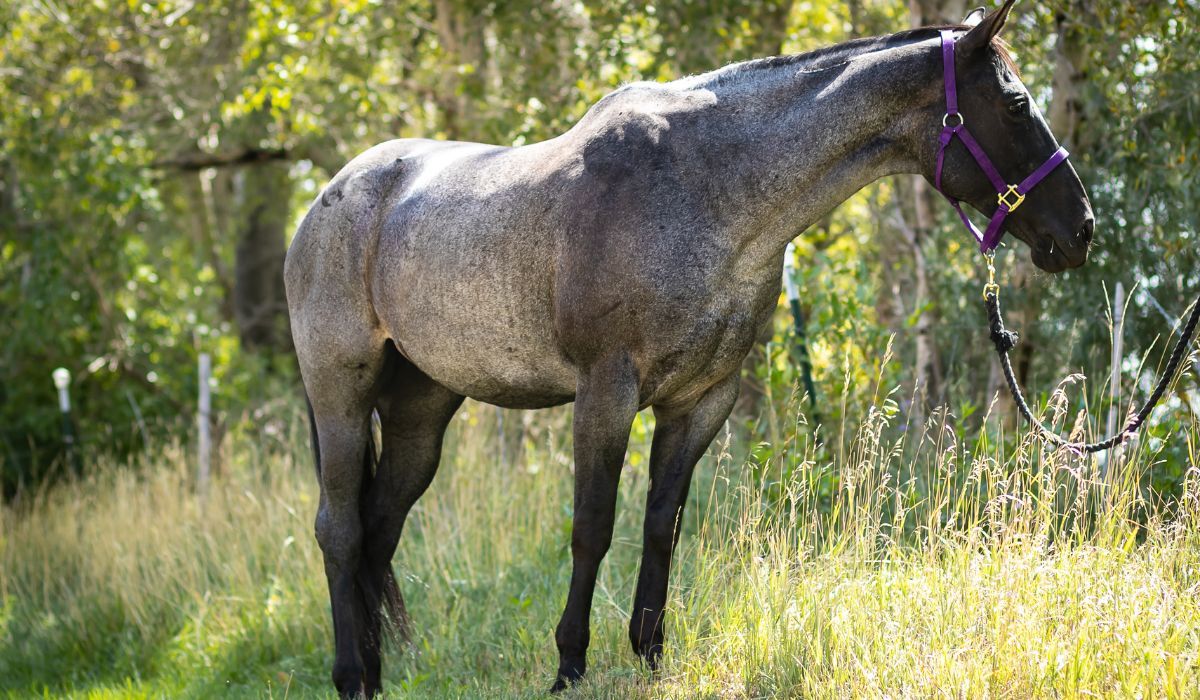
Quarter Horses
Quarter Horses have one of the largest blue roan horse populations because the breed numbers are higher than any other breed. Blue roan Quarter Horses are regularly seen in the show ring, on the ranch, and everywhere in between. The American Quarter Horse Association provides more information on the coat pattern, and horses are also involved with the American Roan Horse Association.
Aztecas
The Azteca is a cross between the Andalusian and Quarter Horse and introducing the Quarter Horse bloodlines also introduced the blue roan color. Blue roan is one of many colors recognized by the American Azteca Horse and the international association. The breed is known for its cow sense, endurance, and wonderful personality.
Percherons
Percherons are a draft breed that originated in France and also have blue roan as one of the acceptable breed colors. One distinction with Percherons is the breed only has blue and red roan horses, there are no bay roan Percherons. Percherons are one of the most popular draft horses in the United States.
Belgian Draft Horses
The Belgian draft horse is another with blue roan members of its population. They’re also extremely popular in the United States. There is a strong preference for sorrel and red roan Belgians here though. So in this case, you can consider finding a blue roan horse rare. However, in Europe, there are still a lot of blue roan Belgian draft horses. Most of the blue roan horses you find in the United States are registered through the American Brabant Association.
Welsh Pony
Many children dream of their own pony and the Welsh pony is the one dancing across many of those dreams. They have friendly personalities and even temperaments. Welsh ponies come in four sections based on size, and two more sections based on bloodlines (Half-Welsh and Part-Bred Welsh). They also have blue roan colors across the breed.
American Paint Horse
American Paint Horse owners already enjoy a little splash with their ride, and the blue roan horse further enhances their appeal. Paint Horses are a color breed, and as such, have detailed information available on their color genetics. Paint Horses are known for their athleticism and steady performance, in addition to their color.
Paso Fino Horses
One of my favorite demonstrations to watch is a rider on a Paso Fino horse holding a glass of water while the horse gaits along. These horses are so smooth that the water doesn’t spill. Paso Finos are gaining popularity because of their wonderful temperaments and smooth gaits, and the blue roan color shows up in this breed too.
There’s a wise old saying among horse people that “a good horse is never a bad color,” and that is true. But here’s the thing, you also spend a lot of time looking at that color. So, you might as well find a good horse that is also an appealing color for you, and that might just be a blue roan horse.
Sources: American Quarter Horse Association, American Roan Horse Association, Cowgirl Magazine, Equisearch, Helpful Horse Hints, and Horse Racing Sense.
